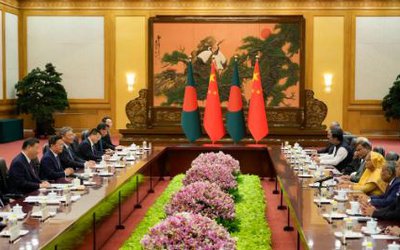
At a time when all South Asian countries have been facing surge of COVID-19 infections, Bhutan is also wrapping up the lock down protocol. Following the news of lockdown protocol formulation, Bhutanese society face panic after circulation of a fake news that Covid-19 community transmission and a possible lockdown of the Bhutanese capital report Kuensel online.More
Prime Minister Dr Lotay Tshering during a recent meet with the Parliamentarians said that although the epidemiological definitions vary, any positive Covid-19 case outside the quarantine facility should be considered as a local transmission for Bhutan.
Lyonchhen said that should there be a local transmission, a lockdown would undeniably be put in place. However, he added that a lockdown would not necessarily mean locking down all the 205 gewogs at the same time.
He said that given that the R0 (read R-nought), which is the effective reproduction number of Covid-19, is very high (as high as six) a lockdown would be the only option to control the spread of the virus.
A Covid-19 infected person in the open can spread the virus to six people who would then infect six more (36 numbers) and so on.
Lyonchhen said that the duration of the lockdown would depend on how effectively the country can identify and isolate the suspects.
Movement of people, he said would be severely restricted during the lockdown. However, designated officials and vehicles that can move during the lockdown have already been identified.
In the event of an emergency, these designated officials would facilitate the services without the general public having to come out of their homes. “The ministry has developed a guideline, and I feel that they have done a wonderful job.”
Lyonpo Dechen Wangmo said that once the guidelines are finalised and approved by the national task force, it would be available to every individual and public sanitisation on the guidelines carried out.
Meanwhile, clinical microbiologist with the national referral hospital Dr Tshokey said that with increasing cases across the border, if the public continues to be complacent, community transmission could happen and then lockdowns in different scales would have to be enforced to prevent its spread.
“For this, protocols need to be developed and tested at different levels. Therefore, the health ministry with different stakeholders is preparing and developing protocols with different scenarios. Without preparation, it will be chaotic when we’ve to do it.”
Health officials said it could have surfaced following the news of lockdown protocol formulation. The health ministry would soon complete the lockdown guideline that outlines the roles and responsibilities of every organisation, including the Dos and Don’ts for the public in the event of a lockdown.
Health Minister Dechen Wangmo said that the guideline was developed in preparation of a possible lockdown, should it happen.
“It is important for the public to understand that it is not possible to predict a lockdown, when and how it would happen. Neither the time and location of lockdown can be forecast.”
In anticipation of community transmission of the pandemic, which would mean the activation of the lockdown requirement, Lyonpo said that it was important to prepare the public so that there is no panic when it is actually enforced.
“We want to have a very good, detailed plan on what a lockdown would mean for us so that when it hits us, we would be ready,” she said. “The ministry’s plan since the beginning was to have a good preparedness plan.”
Citing the recent example of the man returning from Nepal who had illegally entered the country and reached Thimphu, the minister said in the absence of such preparedness plan it would be a disaster for the country if such incidences recur.
“Luckily, the person tested negative. Otherwise, it would have been really difficult to contact trace all the people he would have come in contact with.”
Lyonpo said that the probability of a community transmission is increasing every day as the situation in the region and neighbouring Indian states deteriorates.
“So in response to this, our preparations would also have to be heightened. This is how we stay ahead of the epidemic.”
The ministry has also tested over 12,000 people through a serosurveillance in the high-risk areas as of yesterday.
A serosurveillance started on July 30 monitors the presence or absence of a specific substance in the blood.
Lyonpo said that the surveillance would now be a regular feature so that if there were any infections among the population, early detection and interventions could be provided.
Source: Kuenselonline
- PM Oli Meets PM Modi In Thailand
- Apr 04, 2025
- I Bow to the People Who Have Given Me Justice: Kulman Ghising
- Apr 04, 2025
- U.S. Embassy’s Creator’s Mela 2025 Expands To Itahari And Pokhara, Empowering Nepal’s Digital Creators
- Apr 04, 2025
- Thai Investors Show Willingness For Investment
- Apr 04, 2025
- South Korea's Constitutional Court has upheld President Yoon Suk-yeol's impeachment
- Apr 04, 2025














